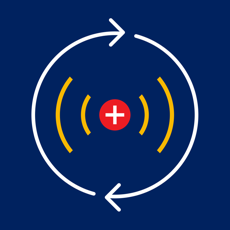Endometriosis, Fibroids, and Premature Ovarian Failure
Understanding the causes, symptoms, and treatments for conditions affecting women’s reproductive health.
What is Endometriosis?
Endometriosis is the presence of endometrial tissue (cells from the inner lining of the uterus) outside the uterus. These deposits can affect the ovaries, fallopian tubes, intestines, and other areas, causing pain, infertility, and complications.
Symptoms of Endometriosis
- Painful periods
- Lower abdominal and back pain
- Painful intercourse (dyspareunia)
- Infertility (difficulty conceiving)
- Nausea, vomiting, dizziness, and fainting during periods
Causes of Endometriosis
While the exact cause is unknown, possible contributors include:
- Retrograde menstruation (backflow of menstrual blood into the pelvis)
- Immune system dysfunction or genetic predisposition
How It Affects the Body
Under estrogen influence, endometrial implants can cause chronic inflammation, swelling, and pain. Ovarian involvement may lead to blood-filled cysts.
Infertility & Severity
Endometriosis can create pelvic adhesions and distort reproductive anatomy. Symptom severity doesn’t always match disease severity.
Common Locations
Endometriosis most often affects the uterus, ovaries, fallopian tubes, and peritoneal surfaces—but may also appear in rare sites like the lungs or brain.
Diagnosis
Initial evaluation includes transvaginal ultrasound. A definitive diagnosis requires laparoscopy with tissue biopsy.
Treatment Options
- Surgical: Laparoscopic removal of cysts, implants, and adhesions
- Fertility: Ovulation induction, IUI, or IVF after surgery
Fibroids and Infertility
Fibroids are benign (non-cancerous) tumors made of muscle and fibrous tissue in the uterus. They can affect menstruation and fertility depending on their size and location.
Types of Fibroids
- Submucosal: Grow inside the uterine cavity
- Subserosal: Grow outside the uterus
- Intramural: Develop within the uterine wall
Fertility Impact
Fibroids may block the fallopian tubes, distort the uterine cavity, or interfere with embryo implantation, leading to infertility or miscarriage.
Premature Ovarian Failure (POF)
POF, also known as primary ovarian insufficiency or premature menopause, occurs when ovaries stop functioning before age 40. This leads to irregular periods, infertility, and estrogen deficiency.
Symptoms
- Missed or delayed periods
- Hot flashes, night sweats
- Mood swings or depression
- Osteoporosis and increased heart disease risk
Causes
POF may result from genetic issues, autoimmune disease, cancer treatment (chemotherapy, radiation), or unknown factors. Smoking can also raise the risk.
Treatment
Hormone replacement therapy (HRT) is used to manage symptoms and protect bone/heart health. For conception, IVF with donor eggs is a common option.
Frequently Asked Questions (FAQ)
- 1. What is endometriosis?
- Endometriosis is a condition where tissue similar to the lining of the uterus grows outside the uterus, causing pain, inflammation, and sometimes infertility.
- 2. What are the common symptoms of endometriosis?
- Symptoms include painful periods, lower abdominal or back pain, painful intercourse, nausea, and difficulty conceiving.
- 3. How does endometriosis affect fertility?
- Endometriosis can cause adhesions and cysts that interfere with the function of the ovaries and fallopian tubes, making conception difficult.
- 4. How is endometriosis diagnosed?
- Endometriosis is diagnosed through transvaginal ultrasound or confirmed via laparoscopy, where a sample is taken for analysis.
- 5. Can endometriosis be treated?
- Yes. Treatment options include hormone therapy, pain relief, laparoscopic surgery to remove lesions, and fertility treatments like IUI or IVF.
- 6. What are uterine fibroids?
- Fibroids are non-cancerous tumors made of muscle and fibrous tissue that grow in or on the uterus. They may affect fertility and cause symptoms like heavy periods or pelvic pain.
- 7. What types of fibroids can affect fertility?
- Submucosal fibroids (inside the uterine cavity) and large intramural fibroids (within the uterine wall) can distort the uterus or block the fallopian tubes, interfering with implantation or causing miscarriage.
- 8. How are fibroids treated?
- Fibroids may be managed with medication or removed through surgical procedures such as myomectomy. Treatment depends on size, symptoms, and fertility goals.
- 9. What is premature ovarian failure (POF)?
- POF, also called premature menopause, occurs when the ovaries stop functioning normally before age 40. It leads to reduced estrogen, infertility, and early menopause symptoms.
- 10. What causes premature ovarian failure?
- Causes include genetic abnormalities, autoimmune disorders, chemotherapy, radiation, and sometimes unknown factors. Smoking may also increase the risk.
- 11. What are the symptoms of POF?
- Symptoms include missed periods, hot flashes, night sweats, mood changes, infertility, and increased risk of osteoporosis and heart disease.
- 12. How is POF treated?
- Hormone replacement therapy (HRT) is used to manage symptoms and reduce health risks. For fertility, IVF using donor eggs may be an option.






